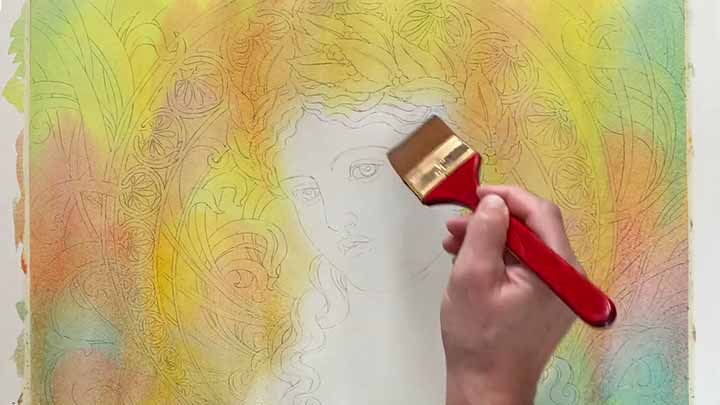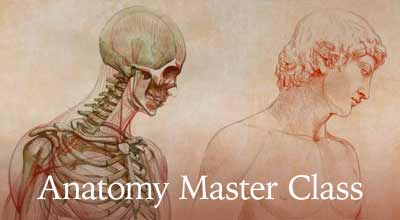How to Preserve White Paper When Painintg Wet into wet

To wet the paper surface, I will use a flat wide synthetic brush and clean water. This is high-quality, Saunders-Waterford watercolor paper, which has 300 gsm weight and is made of 100% cotton. It has a cold-pressed, which is also called 'Not', surface. First, I will moisten the entire paper sheet. It is easier to control the amount of water when applying it with a flat brush. You can do it with a sponge as well, but it's less convenient. You need to make sure that there are no dry gaps left. Because the wet surface is reflective, such gaps are easy to spot. The board with paper is placed horizontally, so water doesn't flow down. It will take several minutes for paper to absorb water. The paper sheet is fixed to the board with masking tape. To prevent water getting under the tape, its edge is sealed with masking fluid. Because the paper was fixed dry, it will expand and buckle. This is one of the reasons why I don't particularly like fixing paper to the board with masking tape. Should this paper be stretched not dry, but wet with staples, it would buckle less. I will wait until the soaked wet paper becomes shiny and then satin. This is when the paper surface is still wet but not highly reflective. Despite using the saw-wash technique, there are no saw teeth between colors. The brushstrokes are fused to each other softly. Wet paper expands and buckles, forming hills and valleys. Paint flows from the hills down to valleys. The amount of paint has to be no more than needed, so it won't collect in valleys and run in streams. That is why it is very important not to overload the mop brush with liquid paint that would run uncontrollably on the wet paper surface. You can see that every brushstroke has very soft edges. This is the beauty of the wet-into-wet wash. While the paint dries, it spreads, which makes diffused edges even softer. Applying brush strokes diagonally also helps because paint flows down under gravity and diagonal brushstrokes intermix better. To demonstrate how the paint flows and spreads, I will speed up this video. Gravity is your co-creator. It mixes paints on paper and makes diffusion between colors more gradual. You will find more information on how to paint wet-into-wet using the saw-wash technique in the Watercolor Academy Course. When the variegated wash is almost complete, the board can be placed horizontally to prevent paint flowing down. In the next part, I will show you how to paint wet-on-dry while protecting white areas without masking fluid.



